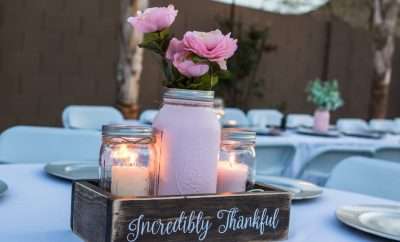
What Repairs/Upgrades is a Landlord Responsible For?
What Repairs/Upgrades is a Landlord Responsible For?
Are you a landlord wondering what repairs and upgrades you are responsible for? Or perhaps you are a tenant who is unsure of your rights with maintenance issues. Do not worry, we have got you covered! Here are the nitty-gritty details of what repairs and upgrades landlords are obligated to undertake. From leaky faucets to broken appliances, we will break down everything tenants need to know about their landlord responsibilities. So that both parties can enjoy a peaceful tenancy and maintain better relationships without any confusion or misunderstandings. So buckle up and let us get started!
What repairing is a landlord responsible for?
As a landlord, you are responsible for maintaining the property. This means that you must repair any damage to the structure of the property, as well as; any damage to fixtures and appliances that are included in the lease. In addition, you must keep the property clean and safe for your tenants.
As a landlord, you are generally responsible for repairing and maintaining the property you rent. This includes ensuring that the property is in a good state of repair and compliant with health and safety standards.
You may also be required to carry out repairs and maintenance if your tenancy agreement states that you are responsible for them. For example, your tenancy agreement might state that you are responsible for keeping the garden tidy or repairing any damage caused by your tenants.
If your tenants report a repair issue to you, you must deal with it promptly. Failure to do so could result in the tenant taking legal action against you.
This means that you are responsible for cleaning all surfaces, fixing any broken locks, and removing any hazardous materials.
Image by Freepik
What upgrading is a landlord responsible for?
A landlord is only required to make repairs that are necessary to keep the property in a habitable condition. For example, if there is a hole in the wall, the landlord would be responsible for repairing it. However, the landlord would not be responsible for upgrading the property, such as painting the walls or installing new carpets.
A landlord is responsible for maintaining the property in a habitable condition, which generally means making sure that the big-ticket items like the roof, windows, and HVAC system are in good repair.
Upgrades, on the other hand, are usually optional. If you want to install new countertops or upgrade the appliances in your rental unit, you’ll likely have to foot the bill yourself. That said, there are some upgrades that landlords may be legally required to make, such as installing wheelchair ramps or upgrading units to meet energy-efficiency standards.
How often does a landlord have to repair/upgrade?
The frequency with which a landlord must repair or upgrade their rental property depends on the condition of the property and the local laws. In some cases, landlords are required to make repairs as soon as they are aware of the issue.
In other cases, landlords may be required to make repairs or upgrades only once a year. If the property is in serious disrepair, landlords may be required to make repairs or upgrades more frequently. Other times, there may be a set schedule for repairs/upgrades, such as every six months or once a year.
In other cases, it may be up to the landlord’s discretion when to make repairs/upgrades, so long as the property remains habitable. Regardless, it is always best practice for landlords to keep up with routine maintenance and address any issues promptly to avoid further damage or potential legal action.
Are there any exceptions to the landlord’s responsibilities for repairing/upgrading?
There are a few exceptions to what a landlord is responsible for repairing/upgrading. These include:
-Damage caused by the tenant or someone acting on behalf of the tenant (e.g. a guest), the landlord is not responsible for repairing/upgrading.
-Wear and tear damage, the landlord is not responsible for repairing/upgrading.
-If the damage is caused by an act of nature (e.g. a storm), the landlord is not responsible for repairing/upgrading.
As a landlord, it is important to understand your responsibilities when it comes to repairs and upgrades. In general, landlords are responsible for making sure that the property is in good condition and habitable for tenants and visitors. Specifically, this means repairing any damages caused by normal wear and tear as well as providing necessary maintenance such as plumbing or electrical upgrades. Landlords should also be aware of their state’s laws about tenant rights so that they can ensure compliance with all applicable regulations. With these considerations in mind, landlords can responsibly maintain a safe living environment for their tenants while ensuring that their investments are taken care of over time.














